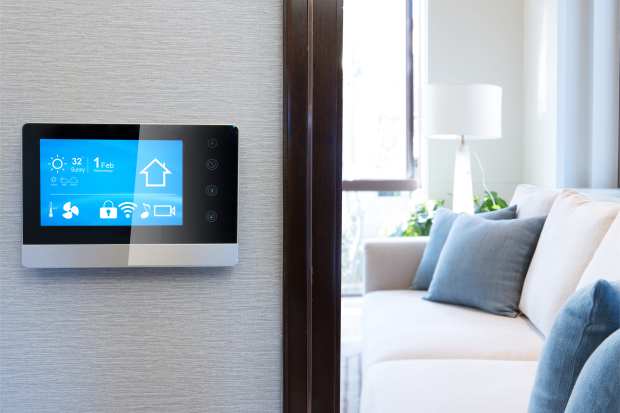Smart Home Wars Heat Up — Will Apple Catch Up?

The long-term battle for payments and commerce supremacy is hitting close to home — literally. And that battle is increasingly involving the heaviest of heavyweights in the digital economy, all of them striving to plant their flags in the emerging Internet of Things (IoT) ecosystem, and to win the loyalty of consumers early on.
At stake is the future of so-called “smart homes.” There exist numerous data points that illustrate the lucrative nature of smart home opportunities (enough data to make this article too long for pleasurable reading) but some of the most telling evidence comes from fresh PYMNTS research — specifically, How We Will Pay 2019, a collaboration between PYMNTS and Visa examining how consumers use a wide range of connected devices to shop and make purchases.
Just consider the ongoing rise of voice-assisted retail, which will play a major role in the evolution of smart homes.
As that PYMNTS research found, in 2019, 31 percent of all consumers reported that they owned at least one voice-activated device, up from 14 percent in 2017. Not only has the share of consumers who own connected devices more than doubled since 2017, but they are also more likely to use those connected devices to make eCommerce purchases. Roughly one in every 10 consumers today uses voice-enabled devices and apps to browse, shop and buy goods online. It’s a remarkable acceleration of a technology that is still relatively young, and for which the use cases for commerce are both nascent and very much evolving.
And that’s not all. Another telling finding from that research is that 76 percent of consumers make purchases while going about their daily routines — and there are few things more routine than all the chores and tasks we all do while inside our homes.
The big players in payments and commerce certainly know that, and are increasing their efforts to make themselves welcome and permanent guests inside our homes. (Is there such a thing as a “permanent guest?” Maybe that’s an issue for another time.)
New Amazon Move
Amazon provides some strong recent examples of all this.
In a recent blog post, Prashanth Halappa, senior product manager at Amazon, touted a new Alexa feature that will, simply put, “ensure that customers always have the supplies required for their device to run at its best, and earn revenue while doing so. Any connected device that uses a consumable — such as printers (ink), thermostats (air filters), toothbrushes (toothbrush heads), washing machines (detergent), dishwashers (detergent), or has replacement parts — such as vacuum cleaners (dust bags, brushes) — can take advantage.”
The idea, he continued, is to “use inventory sensors in your smart home skill to provide consumption updates and Alexa does the rest. Alexa will let customers know when supplies used by your device are running low or parts need replacement.”
IKEA Steps Up
That’s hardly Amazon’s only recent involvement in this area, of course. In fact, the eCommerce operator is itself facing more competition for the smart home market. The most recent example of that comes from IKEA, the home furnishings retailer. News recently emerged about how the company is making big moves into the smart home ecosphere with its biggest investment in decades. The company wants to become a player in the field and take on companies like Google and Amazon in the process, according to a report by the Financial Times. IKEA is owned by Inter IKEA, and company Chief Executive Torbjorn Loof said it is looking into products like smart air cleaners to go along with already existing smart products like light bulbs, blinds and speakers. “We see it as a very interesting area for us to embark on,” Loof said. “We want to simplify it and make it affordable. I think IKEA could have a leading role in the smart home arena.”
IKEA will certainly face brutal competition on its quest to be a player in the smart home market. But other companies seem to have missed their chance — or, at the least, are getting a late start. As Karen Webster pointed out in a recent PYMNTS column, Apple of all companies seems to have missed one of the most important anchors of connected commerce – the home. That’s not all the bad news for Apple when it comes to smart homes — and other areas of payments and commerce. Trendlines suggest the smartphone is slowly becoming less central to the consumer and the commerce experience.
Smartphone Decline
Again, let’s go back to the PYMNTS How We Will Pay research: That study of more than 5,000 U.S. consumers across a nationally representative sample found that they are using their place of residence — along with a curated selection of connected devices — as a home base for many more of their connected commerce experiences than we’ve seen in years past.
According to the research, that shift comes down to two main factors. First, the rapid adoption and usage of voice-activated devices and apps that make it convenient for consumers to make purchases at home while doing other things like cooking, cleaning or watching the kids. Beyond that is the increase in the number of apps consumers now access, using any connected device, to do things at home that they could once only do in a particular physical place — like going to the store to buy things, to the theater to watch a movie or to a stadium to see a live sporting event.
Those are among some of the big, ongoing changes when it comes to smart homes, though other factors are also playing roles. You can be sure this area of payments and commerce innovation will attract more players, more innovation and more disruption in the new decade that’s about to dawn.
